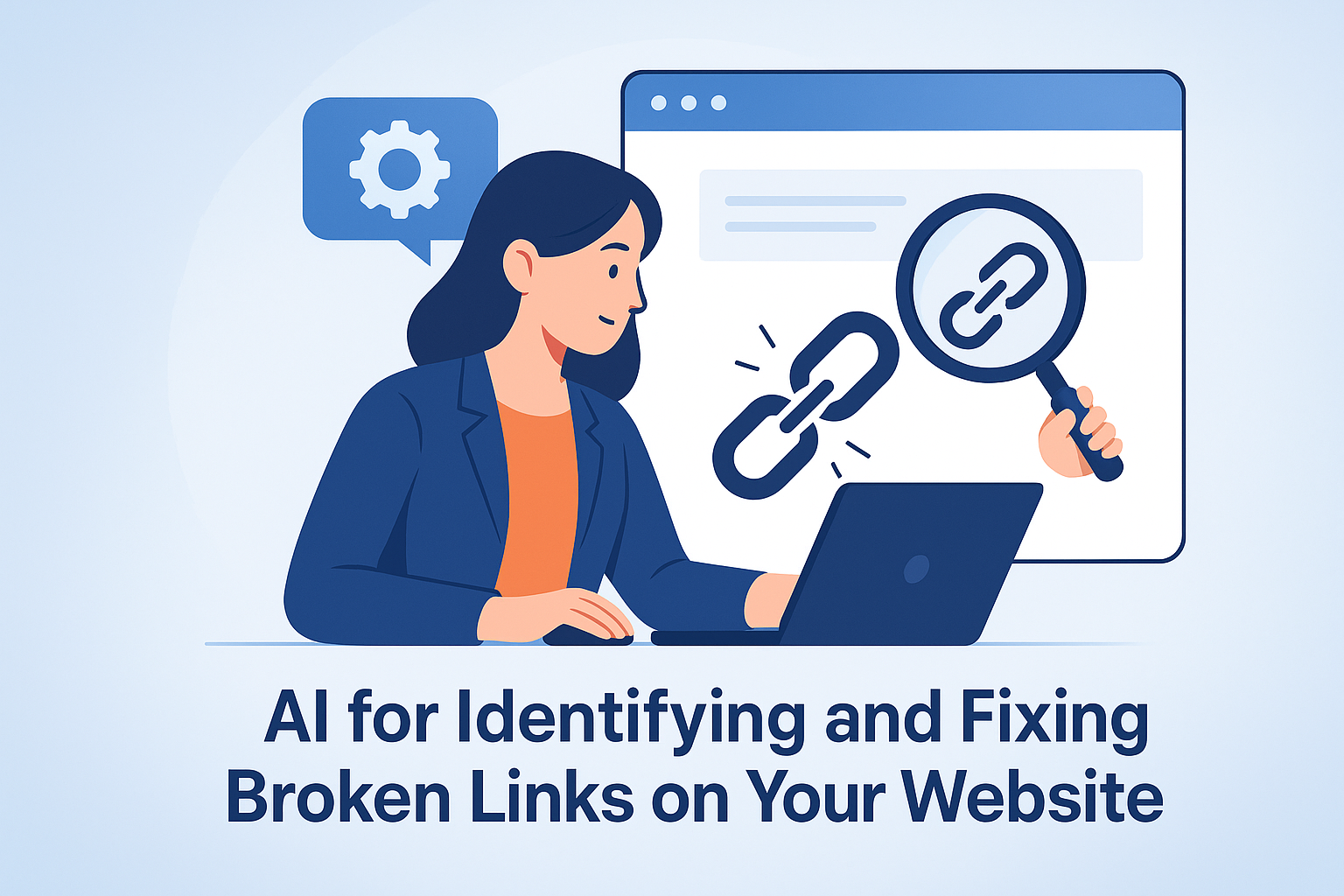If you’re building your website and want to show up on Google, understanding on-page SEO is one of the most important first steps. It’s not just about writing blog posts or adding keywords—it’s about making your content clear, helpful, and easy for both search engines and people to understand.
In this beginner’s guide, we’ll explain:
- What on-page SEO is and how it works
- Why it’s crucial for your search rankings
- The key elements of on-page SEO
- How AI tools like DIYSEO GPT and the SEO AI Writer can help
- How to build visibility and trust using the Link Marketplace
Whether you’re a small business owner, content creator, or marketing DIYer, this guide will help you start optimizing your website the smart way.
What Is On-Page SEO?
On-page SEO (also known as on-site SEO) is the process of optimizing individual pages on your website to rank higher in search engines like Google.
Unlike off-page SEO (which involves things like backlinks and social signals), on-page SEO focuses on what you can control directly on your site:
- Page content
- Metadata (like titles and descriptions)
- Header tags and layout
- Keyword targeting
- Image optimization
- Internal links
- Mobile-friendliness and user experience
When done right, on-page SEO helps search engines understand your content—and encourages users to click, read, and convert.
Why On-Page SEO Matters
Search engines like Google want to show the most relevant, useful, and trustworthy results for every search.
Your job is to make it easy for them.
If your page is:
✅ Clear in its topic
✅ Structured properly
✅ Rich in helpful, unique content
✅ Easy to read and navigate
…it has a much better chance of showing up in organic search.
Benefits of On-Page SEO:
| Benefit | What It Means for You |
|---|---|
| More organic traffic | You rank higher and attract more visitors |
| Better user experience | People stay longer, read more, and trust you |
| Higher conversion potential | Optimized pages guide users to take action |
| Stronger content authority | Google sees your site as a reliable source |
The Core Elements of On-Page SEO
Let’s break down the essential parts of on-page SEO that DIY marketers should focus on.
🧠 1. Title Tag
This is the clickable headline shown in search results. It should:
- Be under 60 characters
- Include your target keyword
- Be attention-grabbing
Example:
“Best AI Tools for SEO in 2024 | Your Complete Guide”
📄 2. Meta Description
This short summary appears under your title in search results. It should:
- Be under 155 characters
- Include a keyword and benefit
- Encourage users to click
Tip: Use the SEO AI Writer to write compelling meta titles and descriptions automatically.
🧱 3. Header Tags (H1, H2, H3…)
These organize your content for both users and search engines.
- H1: Used once per page—this is your main headline
- H2/H3: Subheadings that structure your content
- Include keywords naturally in headers
🔑 4. Keyword Optimization
Keywords tell Google what your content is about. To optimize:
- Include the primary keyword in the title, intro, H1, and a few subheadings
- Use related phrases to support the topic
- Avoid overusing or “stuffing” keywords
With DIYSEO GPT, you can analyze each page to find which keywords are underused—or missing entirely.
🖼️ 5. Image Optimization
Images should:
- Use descriptive filenames
- Include alt text (a description of the image for SEO and accessibility)
- Be compressed for fast loading
Use the SEO AI Writer to auto-generate alt text that’s keyword-aware and context-friendly.
🔗 6. Internal Linking
Linking to other pages on your site helps:
- Guide users through your content
- Improve crawlability for search engines
- Build topical clusters for authority
Prompt DIYSEO GPT:
“Which pages should I link to from my blog post about AI content tools?”
Use the AI Writer to place the links naturally in context.
📱 7. Mobile Friendliness & Readability
Your site must be:
- Easy to read on small screens
- Fast-loading
- Free from walls of text or formatting issues
Use Layout & Readability Review in DIYSEO GPT to flag problems and get fixes.
How AI Makes On-Page SEO Easier (and Better)
You don’t need to be an SEO expert or spend hours auditing your site.
With DIYSEO, you can:
✅ Audit pages instantly using DIYSEO GPT
- Find missing metadata
- Detect layout issues
- Spot keyword gaps
- See which pages are underperforming
✅ Fix everything faster using the SEO AI Writer
- Write or rewrite titles, descriptions, headers, and full paragraphs
- Add FAQs and alt text
- Insert internal links
- Expand thin content with structured sections
✅ Track improvements over time
Ask GPT:
“Has the SEO score improved for /ai-content-calendar since we updated the on-page elements?”
From On-Page to Off-Page: Link Marketplace to Boost Your Work
Once your content is optimized, the next step is to build trust and authority.
The Link Marketplace lets you:
- Buy high-quality backlinks to your optimized pages
- Filter by niche, DA, language, or country
- Reinforce your SEO improvements with external signals
Example:
You optimize a page on “AI SEO strategy for small businesses.” Then, build 3 backlinks to it using Link Marketplace to boost visibility and ranking power.
Real-World Example: DIY Marketer Success with On-Page SEO
Problem: A startup owner launched a blog post about “SEO automation tools” but couldn’t get it to rank.
What DIYSEO Did:
- Ran a Layout & Readability Review → flagged missing H2s and keyword overuse
- Used SEO AI Writer to:
- Rewrite the intro
- Add 4 H2s with keyword variations
- Add 3 internal links
- Reformat mobile layout
- Built 2 backlinks using Link Marketplace
Results:
- Page moved from position #23 to #7
- Time-on-page increased by 54 seconds
- Organic traffic to the page doubled in 30 days
On-Page SEO Checklist for DIY Marketers
| Element | Goal | AI Tool |
|---|---|---|
| Title Tag | Include target keyword, drive clicks | SEO AI Writer |
| Meta Description | Explain page benefit, include keyword | SEO AI Writer |
| Header Tags | Create structure and scannability | SEO AI Writer |
| Keywords | Align with searcher intent | DIYSEO GPT |
| Internal Links | Support topic clusters | GPT + AI Writer |
| Alt Text | Improve image SEO and accessibility | SEO AI Writer |
| Mobile Formatting | Improve readability and performance | DIYSEO GPT |
Final Thoughts
On-page SEO is the foundation of your site’s success.
With DIYSEO, you can:
- Audit your content with GPT-powered insights
- Fix on-page SEO issues fast with AI writing tools
- Build visibility by connecting optimized content to real backlinks
Whether you’re a marketer, freelancer, or business owner doing it yourself, AI tools make it easier, faster, and more accurate to implement best practices that boost rankings.
On-page SEO is no longer just for experts—it’s for DIYers with the right tools.
Frequently Asked Questions
1. What is On-Page SEO and why is it important for DIY Marketers?
On-Page SEO refers to the practice of optimizing individual web pages to improve their ranking on search engine results pages (SERPs) and to earn more relevant traffic. This is crucial for DIY marketers because it is one of the most immediate tools you can control to influence your website’s visibility and effectiveness in organic search. On-Page SEO covers a variety of elements that you can optimize directly on the website, such as content quality, keyword usage, meta tags, images, and user experience. Understanding On-Page SEO allows you to make informed decisions about how to effectively communicate with both search engines and your audience.
2. What are the fundamental elements of On-Page SEO?
The fundamental elements of On-Page SEO include:
- Content Quality: Content is king. It needs to be informative, engaging, and relevant to the user’s search intent.
- Keyword Optimization: Keywords should be used naturally and strategically throughout the content, including in titles, headers, and throughout the body text.
- Title Tags and Meta Descriptions: These are essential for helping search engines understand the page’s topic and encouraging users to click through from the SERPs.
- Headlines and Subheads: Properly structured headers (H1, H2, H3, etc.) make your content easier to read and crawled by search engines.
- Image Optimization: Use relevant images with proper alt attributes to enhance user experience and aid search engines in understanding the images associated with your content.
- URL structure: Clean, descriptive URLs that include keywords can improve click-through rates and readability.
- Internal Linking: Guides users to additional relevant content and helps distribute page authority throughout your site.
3. How can I choose the right keywords for On-Page SEO?
Choosing the right keywords is a vital part of On-Page SEO. It starts with understanding your audience and what they are searching for. Here are steps to select the best keywords:
- Research: Use tools like Google Keyword Planner, SEMrush, or Ahrefs to discover potential keywords and evaluate their search volume and competition.
- Analyze Competitors: Look at what keywords your competitors are ranking for and consider targeting similar phrases.
- Long-Tail Keywords: These are longer and more specific keyword phrases that are less competitive, attracting more targeted traffic.
- Relevance: Ensure your chosen keywords align with the content’s purpose and the user’s intention.
- Search Intent: Determine whether your primary keywords suit informational, navigational, or transactional queries and tailor your content accordingly.
4. What role do meta tags play in On-Page SEO?
Meta tags like title tags and meta descriptions are essential elements of On-Page SEO, functioning as brief descriptions of a webpage’s content. They appear in search engine results, playing a decisive role in driving clicks and helping search engines understand the page’s theme. The title tag becomes the click-through headline on the search engine results page, so it must be compelling and contain relevant keywords. Meanwhile, the meta description should succinctly summarize the page content, include target keywords, and incorporate a call to action, encouraging users to click through.
5. How can I improve the loading speed of my website for better On-Page SEO?
Website loading speed is a crucial factor for both SEO and user experience. Here are strategies to enhance loading speed:
- Optimize Images: Compress images using tools like TinyPNG or JPEGmini and use the correct format for your needs.
- Enable Browser Caching: This allows pages to load faster for repeat visitors by storing some elements of the site in the user’s browser.
- Minify CSS, JavaScript, and HTML: Remove unnecessary characters from code to decrease file size and improve load times.
- Use Content Delivery Networks (CDNs): CDNs distribute your content across multiple servers worldwide, reducing the distance data needs to travel to reach users.
- Reduce Redirects: Each HTTP redirect makes additional requests, affecting load time. Limiting them can greatly improve speed.
- Choose Reliable Hosting: Invest in a quality hosting provider that can offer adequate resources and support to help maintain fast load times.
Improving your site’s speed not only enhances On-Page SEO efforts but also leads to higher user satisfaction and engagement.



